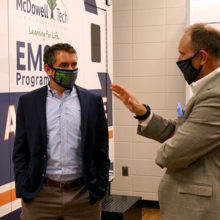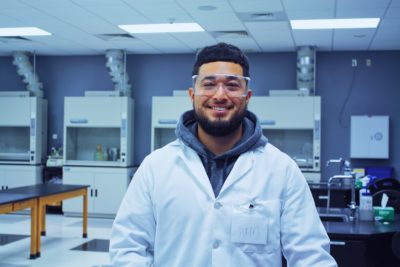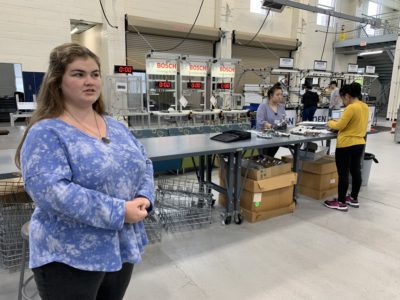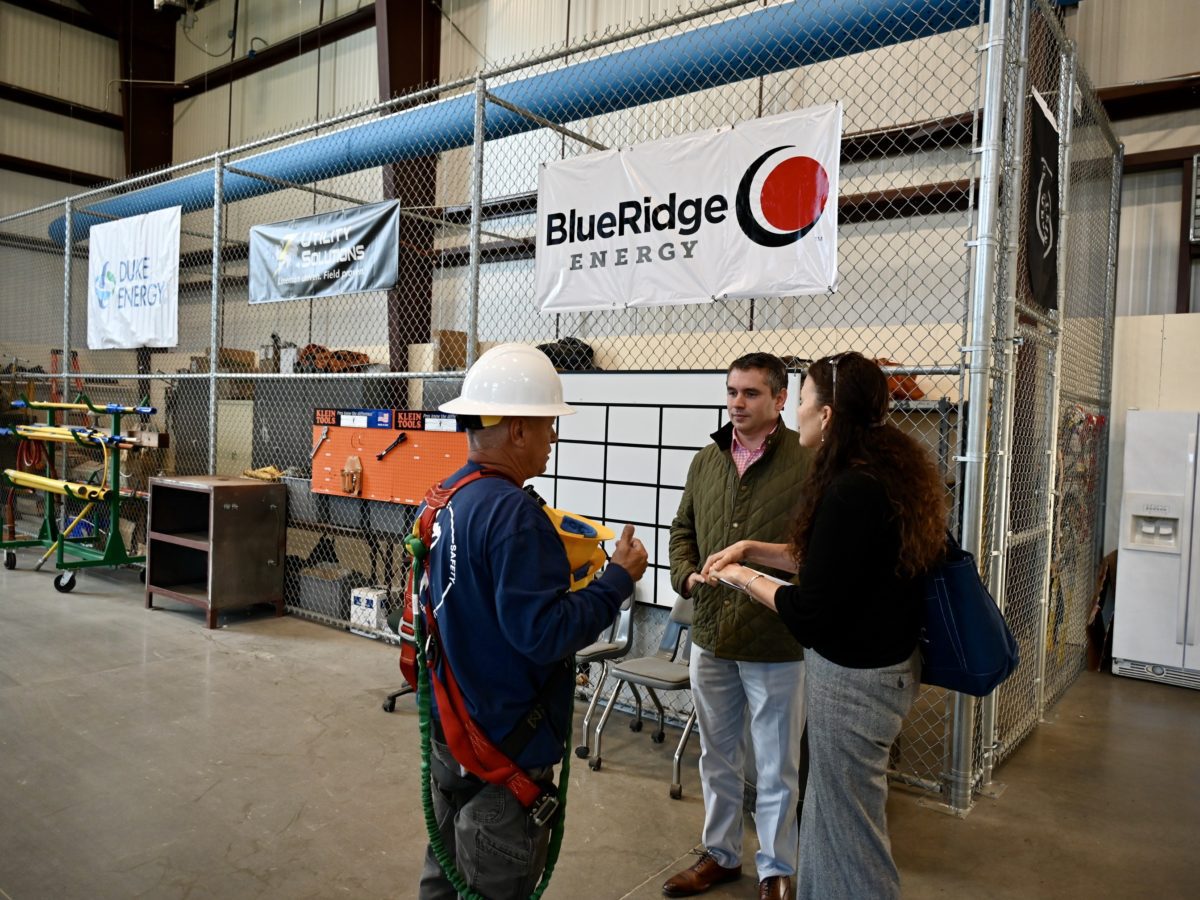

Share this story
|
|
North Carolina has been on a roll when it comes to economic development over the past 18 months. It’s the No. 1 state in the country for business, according to CNBC. We’ve seen elected leaders stand with business leaders to announce hundreds — or even thousands — of new jobs coming to counties across the state. We’ve seen cameras flash as dignitaries hold shovels at numerous ceremonies celebrating new facilities breaking ground.
When you see these announcements, it might be hard for some to recall the bleak days more than a decade ago when job announcements were more likely to be related to significant layoffs in the furniture, telecommunications, or textile industries rather than new jobs arriving.
When we traveled to Caldwell County recently to hear more about the impact of Caldwell Community College & Technical Institute (CCC&TI), we heard from business, education, and government leaders who remember those days because their home county was hit as hard as any county in the state.
Deborah Murray, the executive director of the Caldwell County Economic Development Commission (EDC), laid out the facts during our conversation:
- The county lost roughly 10,000 jobs from 2002 to 2010.
- Unemployment rose from 2% to 17.6% in 2010.
- Roughly 7 million square feet of industrial space was vacant.
- The poverty rate for the county increased to 20.8% in 2010.
Today, Murray can trumpet rosier numbers, including a 37% increase in private sector wages since 2015, a 15.3% increase in median household income as of the latest census, and a 42% reduction in the poverty rate since 2013.
“We are the authors of our own comeback,” Murray declared — the “Caldwell Comeback,” as several residents we met with dubbed it.
How did this comeback happen? CCC&TI President Mark Poarch’s answer is simple: “Partners matter. Caldwell County is a special place due to our partnerships.”
Caldwell’s resurgence is a story of the power of collaborations between businesses, government, and educational entities who came together in the early 2010s with a determination to change the trajectory of their county through a shared vision. They called the group Caldwell 2020.


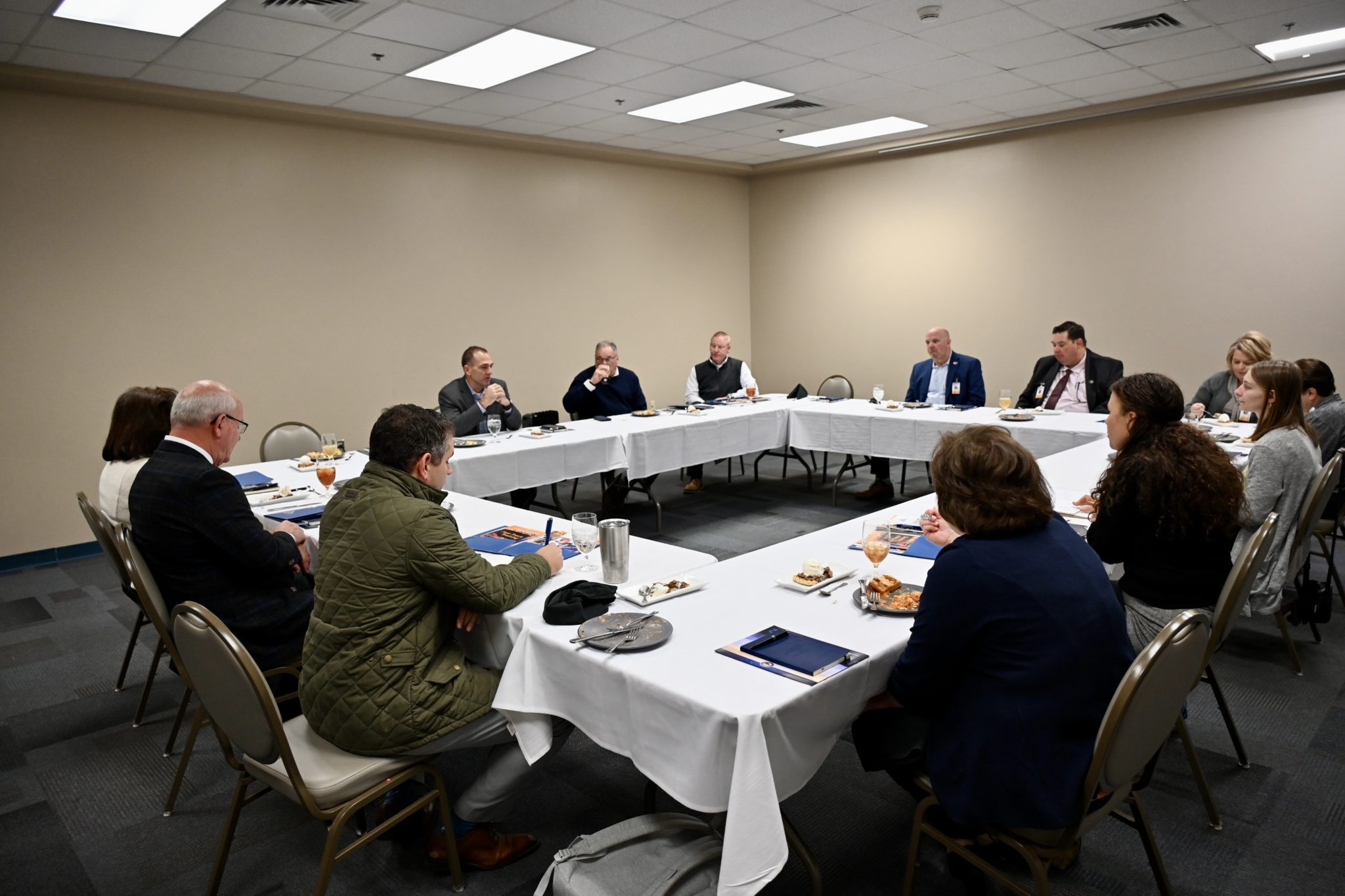

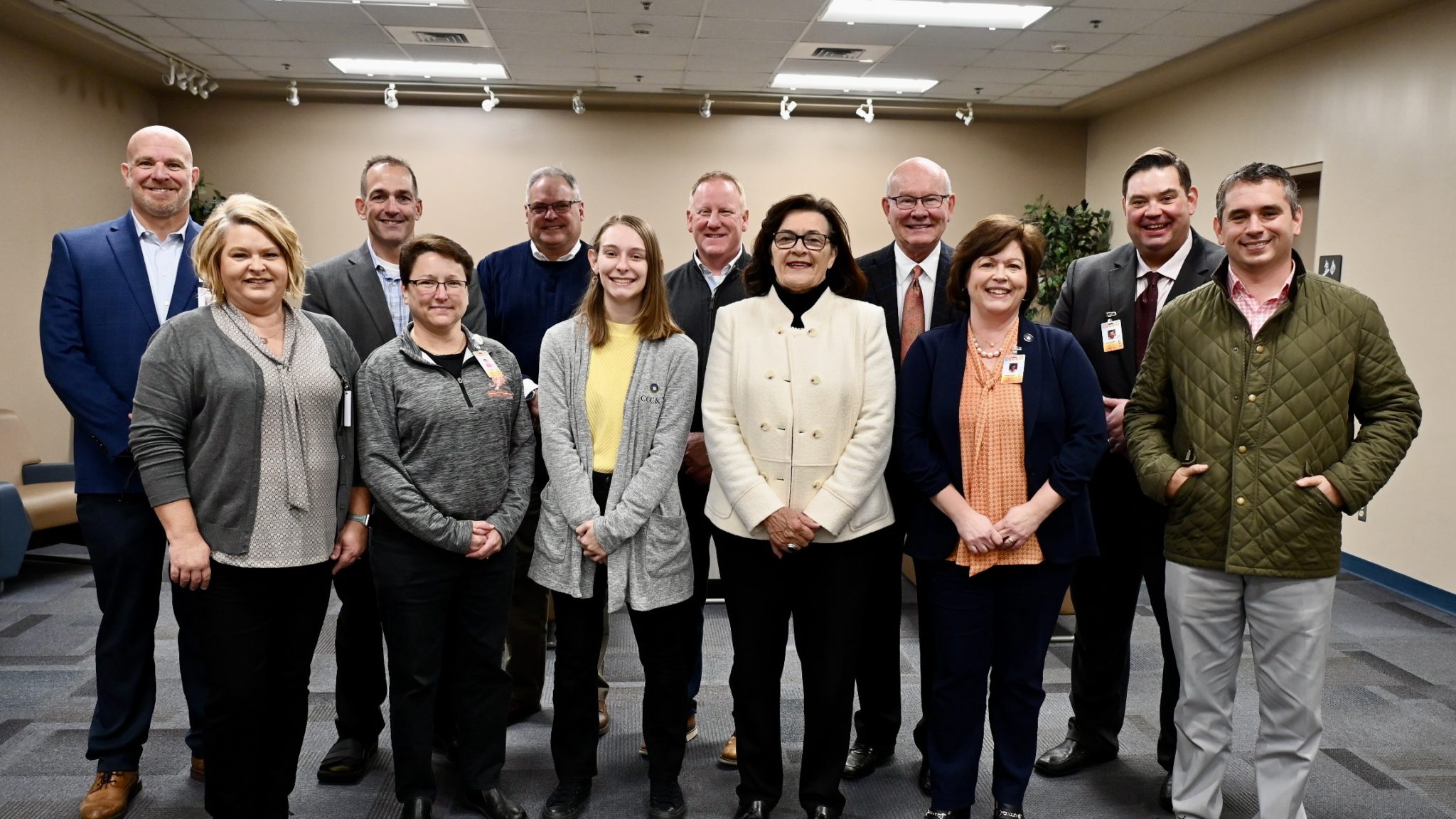

We met with representatives from a variety of industries during our recent visit to Caldwell — and Murray noted that the folks in the room were part of the solution.
“We have been rolling up our sleeves. And (we’re) so appreciative of the college’s leadership, and school system, the facilities (they provide), the hospital, the furniture companies, and specifically really strong leadership represented here in this room. It makes a huge difference.”
— Deborah Murray, executive director of Caldwell County Economic Development Commission
Their work together looks like a furniture academy that brings industry and the community college together. It looks like the community college launching a pharmaceutical program to support a growing biotechnology sector.
It has even taken the form of working together to recruit a much-needed child care center. Murray pointed out one challenge for the county is growing the labor market participation of county residents — but a significant barrier for adults reentering the workforce is often available child care.
When the EDC began the process of recruiting a child care center to the county, they began with a visit to CCC&TI to show them the early childhood education program.
On the day the child care center representatives visited, it is even possible they saw the Caldwell County Schools Superintendent Don Phipps teaching a class. In the spirit of partnership, even the superintendent with all of his responsibilities pitches in to teach early childhood education at the college.
Building a workforce
Rebuilding the county’s workforce is one of the larger challenges in the aftermath of 10,000+ jobs being lost over the course of a decade. This work included re-training adult workers, but it also meant providing career exploration, dual enrollment through Career and College Promise, and providing career and technical education (CTE) in the high schools.
Rebuilding the pipeline of workers starts with a focus on making high school meaningful for all of their students, Phipps said.
“And it’s not to diminish the college going crowd. The folks that have college aspirations, we want to prepare them to do that. But we want the high school years to be meaningful (for everyone),” Phipps said. “And we’ve encouraged folks to engage in instructional strategies and activities that engage students that get them involved in encourage participation, rather than for them (to just) sit and get.”
CTE in Caldwell County Schools looks like 60 courses across 13 career tracks ranging from accounting to farming to food service.
Here is an example of one pathway:
Industry leaders noted the evolving workforce will require even more work from the college.
Caldwell UNC Healthcare CEO Laura Easton lamented the challenges of managing a health care workforce in the aftermath of the COVID-19 pandemic. The pandemic led to an increase in hospitals across the country utilizing travel nurses who are contracted through nursing agencies. Travel nurses are more expensive for the hospitals— and this cost has threatened the bottom line of hospitals across the country.
For Caldwell UNC Healthcare, the high cost of travel nursing underscores the importance of working with CCC&TI to grow and retain their own homegrown talent. The success of their partnership will be vital to their bottom line moving forward.
On the furniture side, William Howard of Bernhardt Furniture pointed out that many folks have an outdated view of what jobs in the industry are like. They have plenty of jobs in the factories, but they also employ two dozen information technology (IT) staffers among other roles.
“We have employees with master’s degrees, lawyers, MBA students, and, yes, folks who received their GED at Caldwell. We run the gamut,” Howard said.
They partnered with CCC&TI on the furniture academy for some of the more traditional roles within their factories, but they are also looking for a pipeline of diesel truck mechanics from the college moving forward.
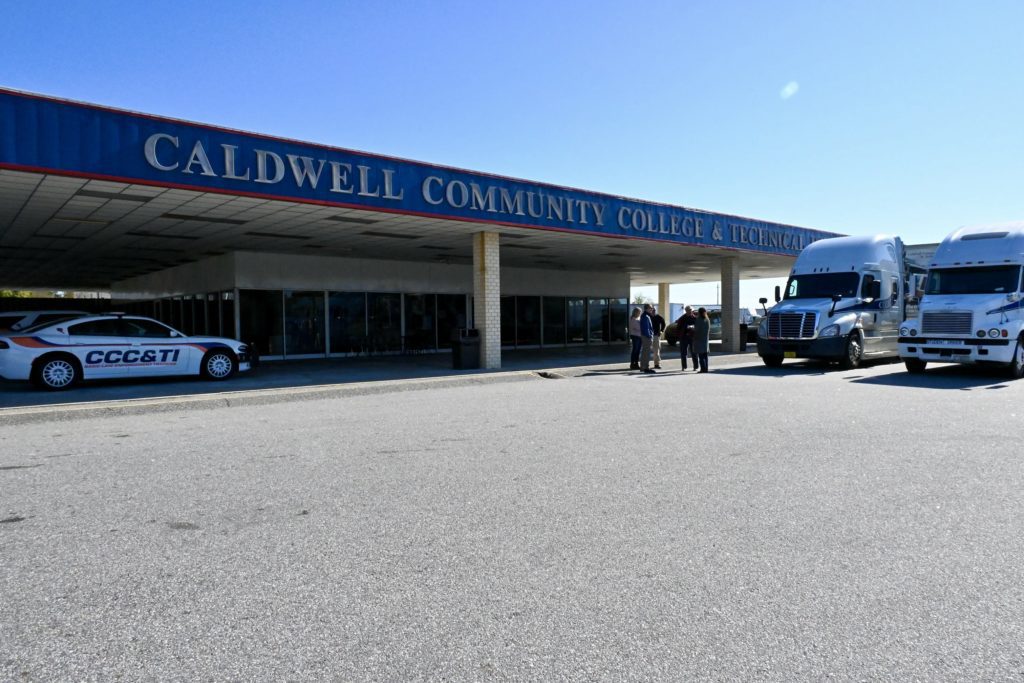

“We’re looking for diesel truck mechanics because we ordered four new $400,000 tractors to haul our furniture across the country, and we need guys that know what they’re doing to work on those machines,” Howard said. “It’s not just important for the college to train truck drivers. It is important they train those mechanics for us.”
“I just can’t imagine this place without Caldwell Community College, frankly.”
William Howard, Bernhardt Furniture
The economic impact of the college
According to a recent study, CCC&TI provides an estimated annual impact of $159.9 million.
The impact is produced across an array of constituencies, including $130.5 million in added income for alumni, $26.1 million in operations spending, and $3.3 million cumulative impact in daily spending of their students.
“For every dollar that taxpayers invest in Caldwell Community College, they get a return of $2.20 on the dollar,” Poarch said.
Murray pointed out what she dubbed the “rapid growth” of a “biotech and pharmaceutical cluster” in Caldwell County was possible due in large part to CCC&TI.
“The pharmaceutical manufacturers in this community have been our fastest growing highest pay companies — and they require a wide variety of training. And it was the community college who stepped up and made it possible,” Murray said.
Murray went on to credit the nimble and responsive nature of community colleges for the opportunity they provide to accelerate economic development for their home regions.
The economic impact is most acutely felt by alumni through increased lifetime earnings.
“When you look at the return on investment for students for every dollar they spend, they receive $5.50 in return,” Poarch said. “And then if they’re going into specialized programs like electrical linesman, there’s a $9.20 cent return on their $1 investment.”
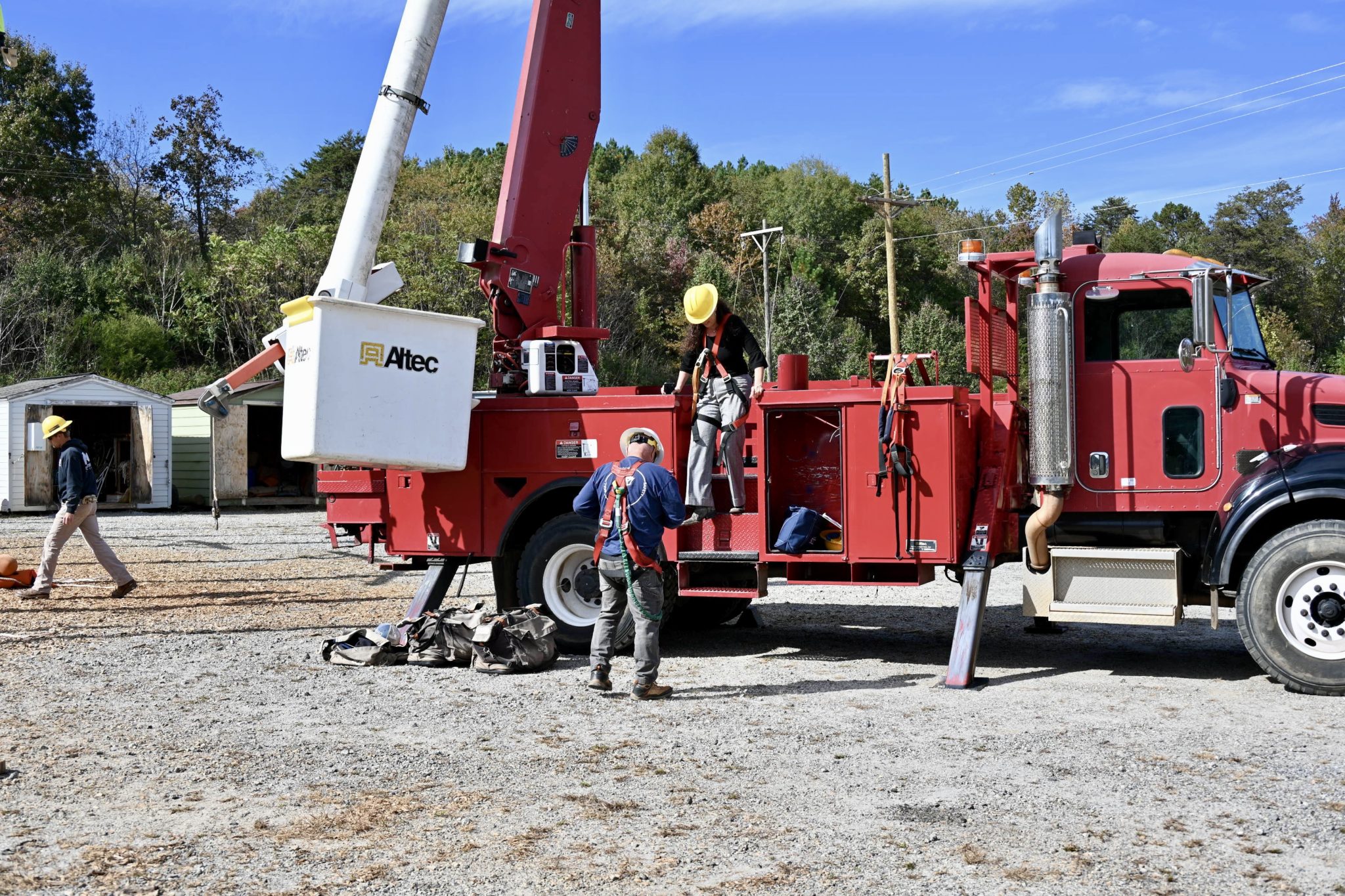

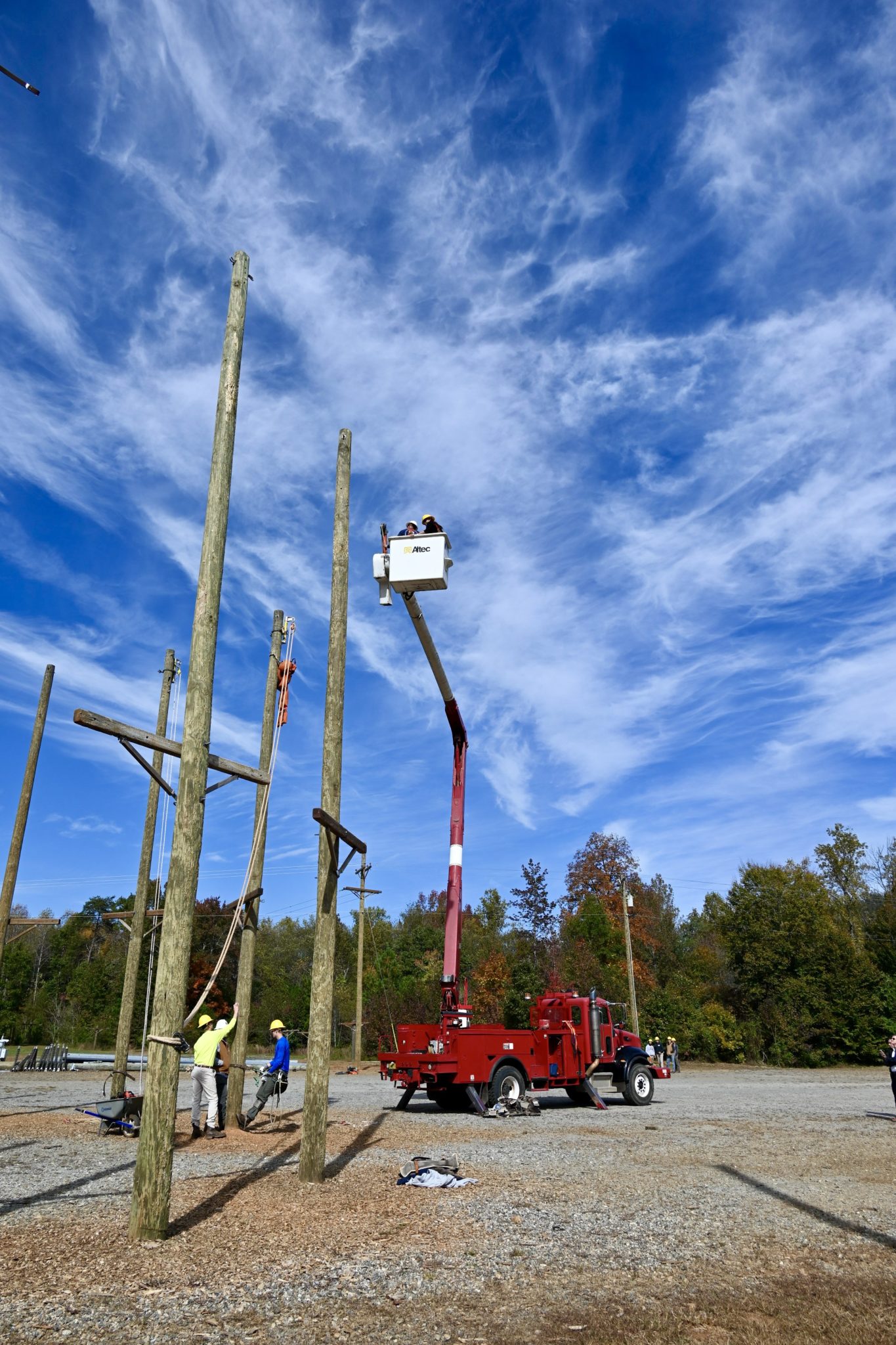



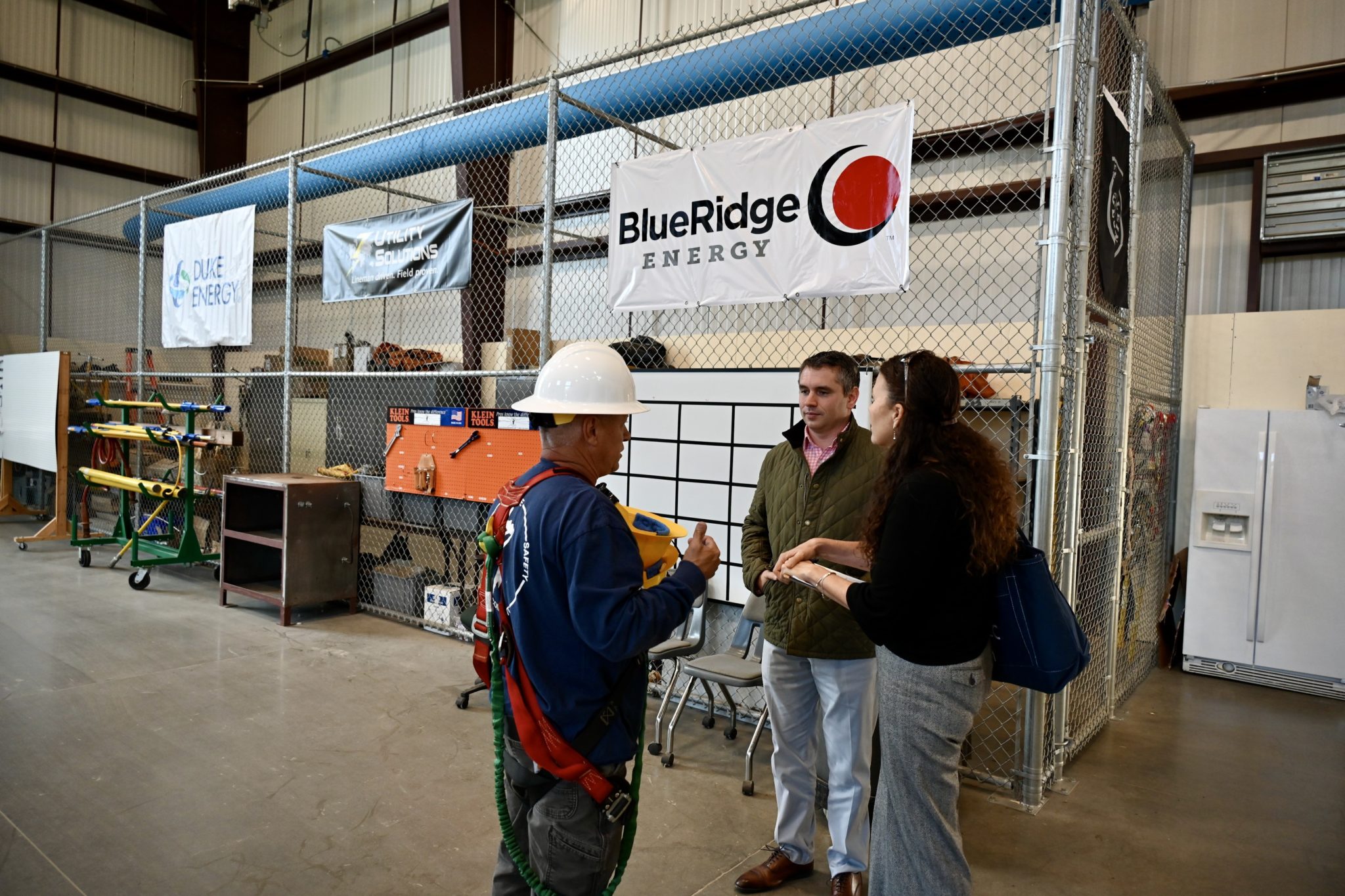

Blue Ridge Energy Electrical Cooperative CEO Doug Johnson shared what his company receives courtesy of CCC&TI’s customized training. Blue Ridge Energy needs a steady stream of electrical linesman. According to Johnson, these electrical linesman can earn over $80,000 a year with overtime pay.
“Those jobs are not just good jobs in our region. They are great jobs,” Poarch said.
And it goes beyond electrical linesman for Blue Ridge Energy. They also provide advanced metering, which requires what Johnson labeled “a communications mesh” and therefore the company needs employees trained in communications. They also need more employees to staff their increased number of electrical substations. As we met, Blue Ridge and CCC&TI were in conversation about the potential of launching a substation program.
The economic impact of the college gives Poarch and his team a story to tell, but it is the employers they collaborate with who make the best case, according to Poarch.
“When the CEO of Blue Ridge energy hires our students and puts them to work and they are making great wages, that tells our story better than anything we can do,” he said. “The biggest compliment we can have is when people hire our graduates to work, and they see the value in what we’re doing.”
